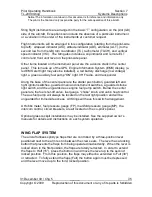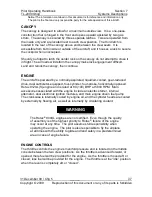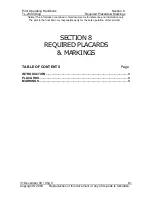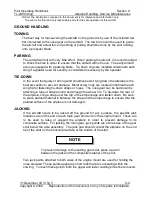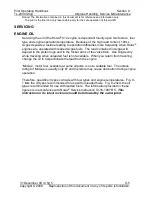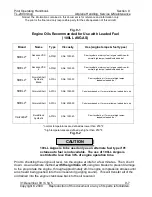
Pilot Operating Handbook
Section 7
TL-2000
Sting
Systems Descriptions
Notice! The information contained in this document is for reference and information only.
The pilot is the final and only responsible party for the safe operation of this aircraft.
31 December 09 / Chg 5
______
7-19
Copyright © 2009 Reproduction of this document or any of its parts is forbidden.
The same holds true for a descent. The indicator will show a rate of descent so
long as the aircraft continues to lose altitude but will return to zero whenever level
flight is reached. Because of the metered leak, there is a small delay in the VSI’s
indication and a change in altitude may be noted first from the altimeter.
AVIONICS EQUIPMENT
Multiple avionics equipment may be installed. The POH is not able to provide
complete descriptions due to the many optional installations.
.
For specific operational instructions, see the manufacturer’s
operation manual corresponding to each piece of equipment.
TRANSPONDER
The transponder (XTBR) provides altitude information to air traffic control (ATC)
radar. The transponder contains a computerized altimeter connected to the pitot-
static system that allows it to calculate the aircraft’s altitude. This data is then
transmitted to the ground radar of ATC. This altitude information passed onto ATC
is known as Mode C. The transponder display inside the cockpit reads the present
squawk code entered into the system. Control knobs allow the pilot to change the
digits of the squawk code and enter various modes.
GLOBAL POSITIONING SYSTEM RECEIVER
The global positioning system provides a vast amount of navigational information,
such as: present coordinate position, distance, course headings, groundspeed,
altitude, ETAs, ETEs, and a scrolling visual representation of the ground and
surrounding airspace. Push buttons located on the cockpit display allow the pilot
to enter information, toggle between screens, and interact with the scrolling map.
The pilot should consult the provided GPS operations manual for maintaining,
updating, or operating the GPS.
The Garmin 296GPS internal AA batteries should be replaced with
each annual condition inspection. The battery furnished with the
Garmin 396/496 GPS should be checked at each annual condition
inspection and replaced in accordance with the manufacturer’s
instructions.
NOTE
NOTE

